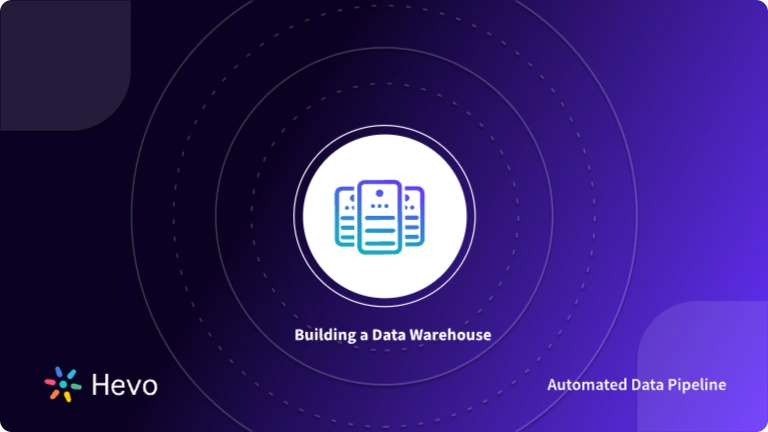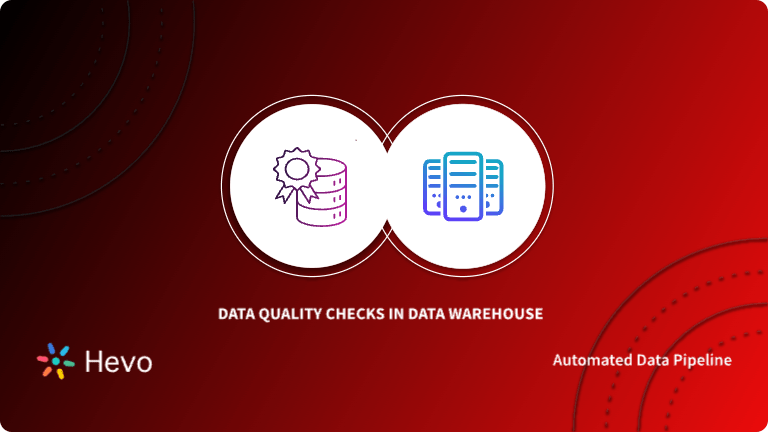Maintaining data quality is a challenging task. Data is often inconsistent and unreliable, especially when pulled from multiple sources. Most data teams spend about 25% of their time doing data ingestion. A data team that needs to win back some of that time should address the issue of the incoming data quality. If you ensure data quality when ingesting data, you can prevent the multiplicity of errors in your data warehouse.
The best approach to monitor data quality issues and prevent them from affecting your product and decision-making is by monitoring your data flows. Monitoring will help you identify schema changes, discover unusual levels of null records, identify missing data, repair failed pipelines and more.
In this article, we will be discussing why you need to monitor data quality before data ingestion.
Table of Contents
What is Data Ingestion?
Data ingestion refers to both the act and the process of importing data from its source (product, vendor, file, warehouse, etc.) into a staging environment. The data is then transformed or moved to its destination. If you are thinking about a data ingestion pipeline, the first stage is ingestion. Or maybe “stage 0” because it is mostly overlooked and not measured with the same rigor as the other stages.
If you allow more poor-quality data to get into your data lake or warehouse, the more it will pollute everything else there. The reason is that errors will replicate everywhere. Hence, there is a need to monitor data quality before data ingestion.
Data ingestion can be a challenging task, especially when dealing with inconsistent data from multiple sources. Hevo Data offers a no-code, automated solution to streamline data ingestion, ensuring quality and accuracy from the start.
Check out what makes Hevo amazing:
- It has a highly interactive UI that is easy to use.
- It streamlines your data integration task and allows you to scale horizontally.
- Transparent pricing with various tiers to choose from to meet your varied needs.
- The Hevo team is available around the clock to provide exceptional support to you.
Hevo has been rated 4.7/5 on Capterra. Know more about our 2000+ customers and give us a try.
”Get[/hevoButton]
What is Data Quality?
In simple words, data quality indicates how trustworthy a piece of data is and whether or not it is suitable for use in decision-making by a user. This attribute is frequently quantified in degrees.
To put it another way, data quality refers to the quality of the data and how valuable it is for the task at hand. However, the phrase also refers to the activities of planning, executing, and regulating the necessary quality management methods and methodologies to guarantee that the data is actionable and valuable to the data consumers.
What Parameters are Used to Assess Data Quality?
Data quality indicators are critical for evaluating your efforts to improve the quality of your data. Data quality measures must be high-quality and well-defined. Keep an eye out for the following data quality metrics: correctness, consistency, completeness, integrity, and timeliness. Let’s look at the many types of data quality indicators and what they mean.
Accuracy
The degree to which data properly reflects an event or item depicted is referred to as data accuracy.
Completeness
When data meets particular comprehensiveness criteria in an organization, it is termed complete. When it comes to data, completeness refers to whether there is enough of it to form useful conclusions.
Consistency
Data consistency basically means that two data values derived from different data sources should not be in contradiction with one another. Data consistency, on the other hand, does not always mean that the data is correct.
Integrity
Data integrity, also known as data validation, is the structural examination of data to guarantee conformity with an organization’s data procedures. Such information demonstrates that there are no unintentional mistakes and that it matches the correct data kinds.
Timeliness
When data is not available when consumers want it, it fails to meet the data quality attribute of timeliness.
4 Reasons to Monitor Data Quality Before Data Ingestion
The following are the reasons why every organization should monitor data quality before ingesting it into their data warehouse or data lake:
1. Higher Chances of Identifying Issues
Abnormal or erroneous data affects all the other data in the system and analytics downstream. When corrupt data is ingested into a data warehouse or data lake, it may mix up with clean data and be used in analytics. This will make it more difficult to identify errors and their source as corrupt data can be “washed out” in the huge volumes of data stored in the system.
For a data engineer or analyst to identify issues in data, he or she should know what the expected results should look like, and diagnose that an anomaly has resulted from data and not changes in the business. When the dirty or corrupt data is only a small percentage of the data stored in a data warehouse, this will become harder.
Thus, you should not overlook errors that may have an impact on your users, product, or decision-making. You can monitor data quality early in the pipeline and ensure that you get the right value from your data.
2. Creating Confidence in The Data Warehouse
Analysts and other stakeholders rely on data warehouses to make sound business decisions. Trust in the data warehouse is good for business agility and making sound decisions. If the data stored in the data warehouse is not trusted, stakeholders won’t trust or use it. This will mean that the organization is not leveraging its data to a full extent.
If a product relies on data, then corrupt data may bar its adoption in the market. Organizations that monitor data quality before ingestion create confidence in that “trusted layer.”
3. Ability to Solve Issues Faster
If you monitor data quality before ingestion, issues will be identified faster, and data engineers will have more time to react. The data engineers are able to identify causality and lineage and fix issues in the source or data to prevent the harmful effects of corrupt data. It is hard to identify and solve issues in a product after the decision has been made.
4. Enabling Data Source Governance
By monitoring and identifying the inception point, data engineers are able to identify a malfunctioning data source and fix it. This facilitates better governance over data sources, in both real-time and long-run.
When to Monitor Data Quality from Ingestion?
It is recommended that you monitor data quality across the pipeline, right from ingestion to destination. However, you’ve to start somewhere. The following are the use cases for prioritizing monitoring during ingestion:
1. Frequent data source changes
If your business relies on APIs or data sources where the data structure changes frequently, it is recommended that you monitor data quality. For example, a transportation application that pulls data from APIs of location data that changes constantly.
2. Multiple External Data Sources
Some businesses get data from multiple sources. A good example is a real-estate app that lists properties based on data obtained from municipalities, offices, schools, etc.
3. Data-Driven Products
When your products are based on data and different data sources have different impacts on the products, it’s good to monitor data quality. For example, navigation applications that get data about weather, roads, transportation, etc.
Common Data Quality Issues in Ingestion
1. Missing Data
Data gaps can occur due to network issues or source inconsistencies, leading to incomplete datasets and incorrect insights.
2. Incorrect Formats
Inconsistent data formats (e.g., date or number formatting) can cause errors during processing and analysis.
3. Inconsistent Timestamps
Varying time zones or missing timestamps can disrupt time-based analyses and event sequencing.
Addressing these issues early ensures data quality and prevents errors from affecting downstream analytics.
Best Practices to Monitor Data Quality
Data quality monitoring was introduced recently. The following are the best practices to help you monitor data quality:
1. Determine Quality Layers
Both data and its quality change across the pipeline. It’s good to divide your pipeline into different steps such as the warehouse layer, the ingestion layer, and the transformation layer. Know data quality has a different meaning to each of these layers and prioritize the layers with the highest impact on decision-making in your business.
2. Monitor Different Quality Aspects
To monitor data quality, you must review a number of aspects. Review the metadata and ensure that the data structure is correct and that all the ingested data has arrived. You can then proceed to address business-related aspects of the data which are related to the domain knowledge.
Conclusion
Data ingestion involves importing data from various sources into a staging environment, but inconsistencies can arise, especially with multiple sources. Monitoring data quality before ingestion helps identify errors early, preventing them from affecting your data lake or warehouse. It’s crucial to monitor data quality if your sources change frequently or are diverse. Dividing your pipeline into layers, such as warehouse, ingestion, and transformation, ensures better monitoring.
Hevo Data simplifies this process with strong integration across 150+ sources, enabling seamless data export, loading, and transformation. Hevo makes your data analysis-ready so you can focus on business insights without worrying about data quality issues. Sign up for Hevo’s 14-day free trial and experience seamless data migration.
FAQs
1. How do you determine the quality of data?
Data quality can be determined by assessing accuracy, completeness, consistency, reliability, and timeliness.
2. How do you monitor data quality?
Use automated tools for data profiling, validation, and anomaly detection to ensure data remains high quality over time. Regular audits and data cleansing practices also help maintain data quality.
3. What are the three indicators of data quality?
The three indicators of data quality are validity, reliability, and relevance.




